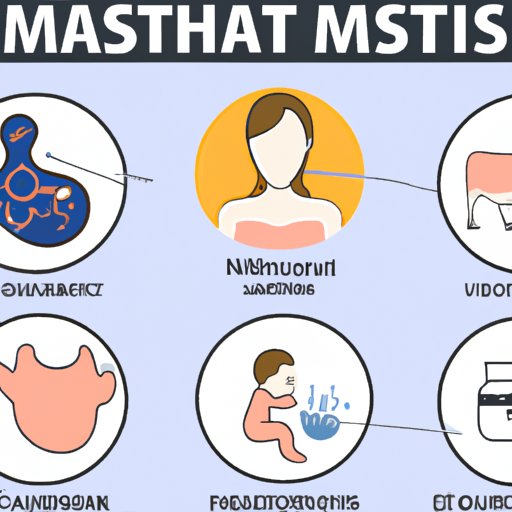
Introduction
Being a new mother can be the most beautiful, yet demanding experience in a woman’s life. However, while breastfeeding is an incredible way to bond with the baby, nursing mothers can also have unexpected challenges such as mastitis. This article is aimed at helping nursing mothers understand and manage mastitis, a condition that can cause them to experience breast inflammation and severe pain.
Mastitis takes root from a blocked milk duct which leads to bacteria entering a mother’s breast tissue. It is more prevalent during the first few months of breastfeeding and can be very uncomfortable. It is important to understand the cause of mastitis, the signs and symptoms, ways of preventing it, and treating it promptly.
Causes of Mastitis
The primary cause of mastitis is a blocked milk duct that may happen as a result of milk overproduction, stress, missed feeds, poor breast drainage, or infrequent breastfeeding. When a duct gets blocked, bacteria may enter, resulting in an infection. Keep in mind that mastitis isn’t harmful to the baby, but it can be uncomfortable and lead to more severe infections if left untreated. Therefore, it is crucial for a nursing mother to understand the common causes of mastitis for early detection.
Signs and Symptoms of Mastitis
Mastitis has symptoms that manifest differently in each nursing mother. However, the most common sign of mastitis is breast pain, which may get worse during feeds. Other symptoms include breast redness, swelling, and warmth, fatigue, and flu-like symptoms such as fever, chills, and nausea. It is essential to be aware of these signs and symptoms to help seek medical attention early.
Prevention Strategies for Mastitis
Preventing mastitis is possible by keeping breasts clean and dry, wearing comfortable and supportive nursing bras, and ensuring proper latch when breastfeeding. Other prevention strategies include feeding often, massaging the breast before and after feeds, alternating breastfeeding positions, applying heat and cold compresses when necessary, and avoiding stress wherever possible. Implementing these prevention tips can reduce the chances of developing mastitis.
Treatment Options for Mastitis
There are different treatment options available for mastitis, and they vary depending on the severity of the condition. Antibiotics are often used to treat bacterial infections, while pain relievers such as ibuprofen are suitable for inflammation. Also, some natural remedies are effective in relieving mastitis symptoms, such as applying cabbage leaves or expressing milk manually to soften the affected breast. It is recommended to consult your doctor before taking any medication or applying any natural remedies.
Self-care and Recovery from Mastitis
Self-care can help nursing mothers recover from mastitis and reduce discomfort. Getting plenty of rest, staying hydrated, avoiding tight-fitting clothes, and taking a warm bath can all promote healing. Additionally, it is essential to continue breastfeeding to drain the breast and avoid milk buildup.
When to Seek Medical Attention for Mastitis
A nursing mother should seek medical attention if the mastitis symptoms do not improve with home remedies within a few days, or if the mother has a fever or chills. Other reasons to seek medical attention may include the presence of pus, excessive drainage, and red streaks extending from the breast. Your doctor may prescribe antibiotics to treat the infection or recommend other treatment options depending on your condition.
Conclusion
Mastitis can be a painful experience for nursing mothers, but there are ways to prevent and treat it. Maintaining good breast hygiene, breastfeeding often, avoiding stress, and seeking medical attention when necessary are critical in combating mastitis. Remember to take care of yourself and trust the recovery process.




